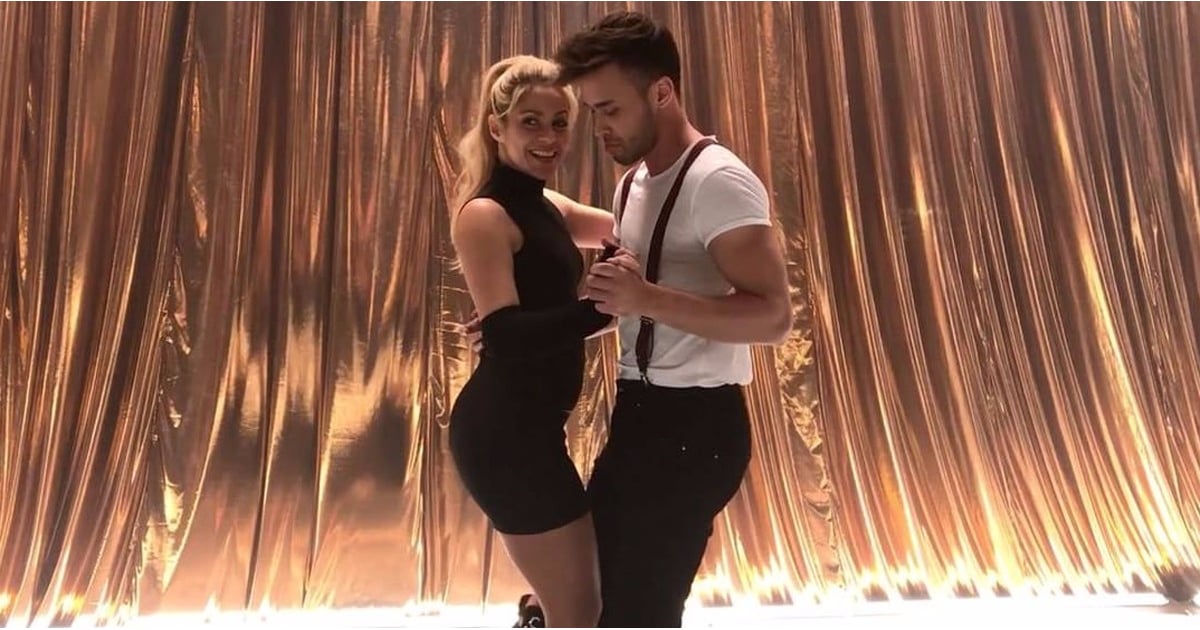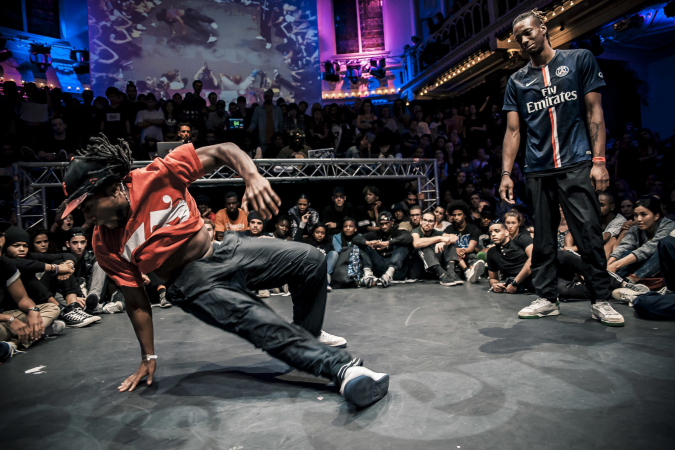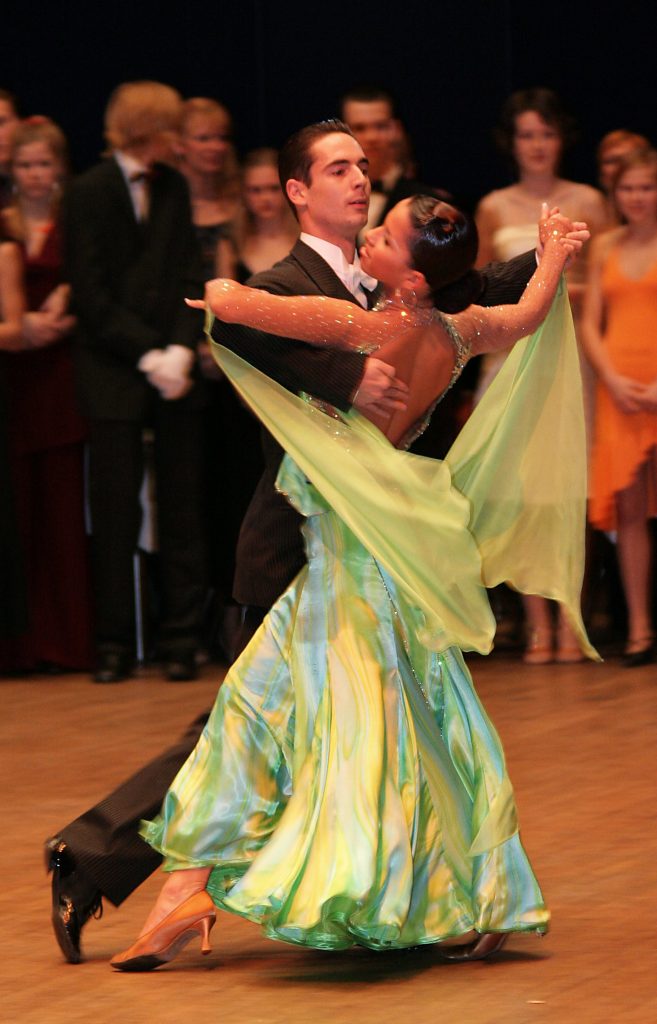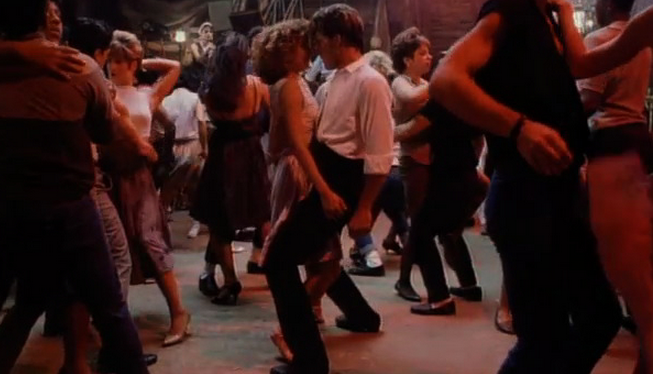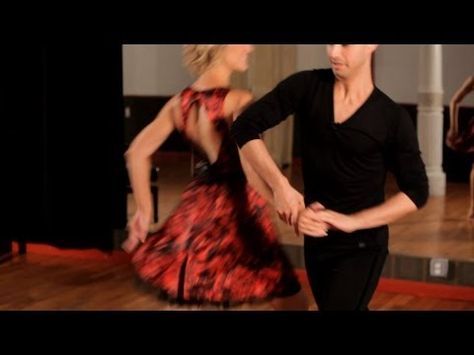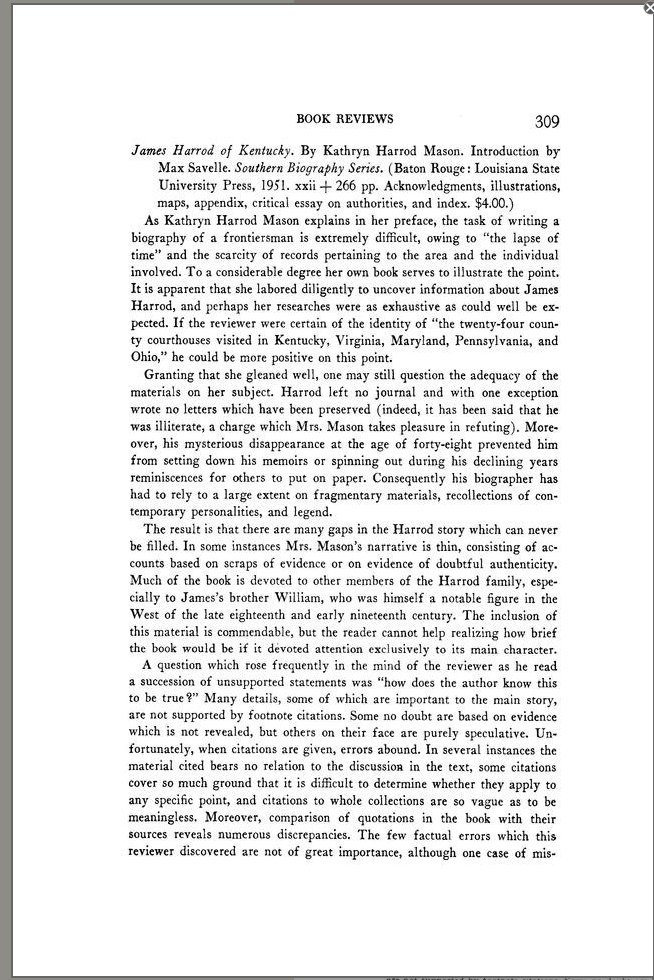How do bees learn the waggle dance
Bee Waggle Dance
Introduction
How to Play
Play Game
Menu
Waggle dance | Round dance | Flowers
Overview
Teamwork
Bees in a colony work with each other to gather food. They try to find the most pollen and nectar in the least amount of time possible.
Finding the best flowers
Some flowers have more pollen and nectar than others. When a good flower patch is found, bees recruit other bees from their colony to the patch. But how do they tell those bees where to find the best flowers?
Communication
Bees communicate flower location using special dances inside the hive. One bee dances, while other bees watch to learn the directions to a specific flower patch. The dancing bee smells like the flower patch, and also gives the watching bees a taste of the nectar she gathered. Smell and taste helps other bees find the correct flower patch.
Bees use two different kinds of dances to communicate information: the waggle dance and the circle dance. Read more about the two different dances below.
Waggle dance
The waggle dance tells the watching bees two things about a flower patch’s location: the distance and the direction away from the hive. Let’s take a closer look at how this works.
Distance
The dancing bee waggles back and forth as she moves forward in a straight line, then circles around to repeat the dance. The length of the middle line, called the waggle run, shows roughly how far it is to the flower patch. Which dance below tells the watching bees that the flower patch is farther from the hive? If you guessed the dance on the left, you are correct!
Direction
Bees know which way is up and which way is down inside their hive, and they use this to show direction. How? Bees dance with the waggle run at a specific angle away from straight up. Outside the hive, bees look at the position of the sun, and fly at the same angle away from the sun.
If the sun were in a different position, the angle would stay the same, but the direction to the correct flower patch would be different.
Round dance
The round dance tells the watching bees only one thing about the flower patch’s location: that it is somewhere close to the hive. This dance does not include a waggle run, or any information about the direction of the flower patch.
In this dance, the bee walks in a circle, turns around, then walks the same circle in the opposite direction. She repeats this many times. Sometimes, the bee includes a little waggle as she’s turning around. The duration of this waggle is thought to indicate the quality of the flower patch she has found.
Finding the best flowers
Honey bee colonies collect two main resources from flowers: nectar and pollen. Their goal is to find the flowers with the most of these two resources.
Individual bees do two things when searching for flowers to get the most resources. First, they specialize to collect one resource at a time: either nectar or pollen. Specializing and focusing on one resource at a time helps bees more easily recognize the best flowers.
Second, bees look for and remember which flower species is the most rewarding. This can change over time. A species of flower that had the most nectar one month might not be the species with the most nectar the next month, for example.
Once a bee finds a good flower, she collects resources and returns to the hive, and dances to tell other members of her colony where to find the flower so they can go and collect more resources from it. To motivate other bees to find the correct flower patch, the dancing bee shares a sample of nectar she collected with them. She does this by regurgitating a sample of the nectar that was stored in her honey stomach for them to taste. These watchers also smell the scent of the flower on the dancing bees’s hind end. These clues help the watching bees locate the correct flower patch outside the hive.
What do bees see?
Bees see the world quite differently from you or me. One difference is that bees have difficulty distinguishing red colors. However, what they can’t see in the red they make up for in the blues, greens, and purples. Bees can even see colors we cannot. Bees can see the ultra violet light we use sunblock to protect our skin from. Seeing ultra violet light helps bees see secret patterns flowers display to show where their nectar is hidden.
However, what they can’t see in the red they make up for in the blues, greens, and purples. Bees can even see colors we cannot. Bees can see the ultra violet light we use sunblock to protect our skin from. Seeing ultra violet light helps bees see secret patterns flowers display to show where their nectar is hidden.
Introduction
How to Play
Play Game
Menu
|
Dancing bees: their meaning and types
Contents
Nutrition
It is already clear that the most important product that these insects eat is honey. But the quality of this substance depends on many factors. For example, from how these little creatures survived the winter hardships. In addition, the taste of honey is strongly influenced by the type of plant from which the nectar is extracted.
It is best that these representatives of the flora do not contain an excess of glucose, sucrose and carbohydrates, because such elements contribute to the accelerated crystallization of this product. And in this form, honey cannot be fully consumed by bees.
And even after collecting a significant amount of this substance, they are quite capable of starving to death. Undesirable plants, for example, include mustard, heather, cotton, and some others.
In cases where its nutrition is of insufficient quality, the bee suffers greatly. And all members of the nest become susceptible to disease and feel bad. Good honey plants include: apple, cherry, pear, willow, linden and many others.
Features of bee dances as a way of transmitting information
Dance is a method of communication for bees. In this way, they communicate certain information to each other. There are several varieties of bee dance. Each has its own characteristics and meaning. Bees perceive space in a special way, which is reflected in the system of signals.
Bees perceive space in a special way, which is reflected in the system of signals.
Dance serves as a kind of compass for insects. In the spring-summer period, the scouts look for the source of nectar and pollen, and when they find it, they return to the hive and transmit information to the gatherers. By dancing, the signaling individual shows the direction relative to the sun:
Exchanging oneself for another
Exchanging oneself for another Another method that generates bodhichitta, that is, the desire to achieve supreme enlightenment for the benefit of all living beings, is the exchange of oneself for another. By applying this method, we try to realize how dependent we are on others for everything we have. We
At the same time, an artificially created external electric field is a significant environmental factor that negatively affects the behavior of insects, disturbs their comfort and prevents movement. Thus, bee colonies in hives located under power lines (power lines) weaken and are characterized by low productivity.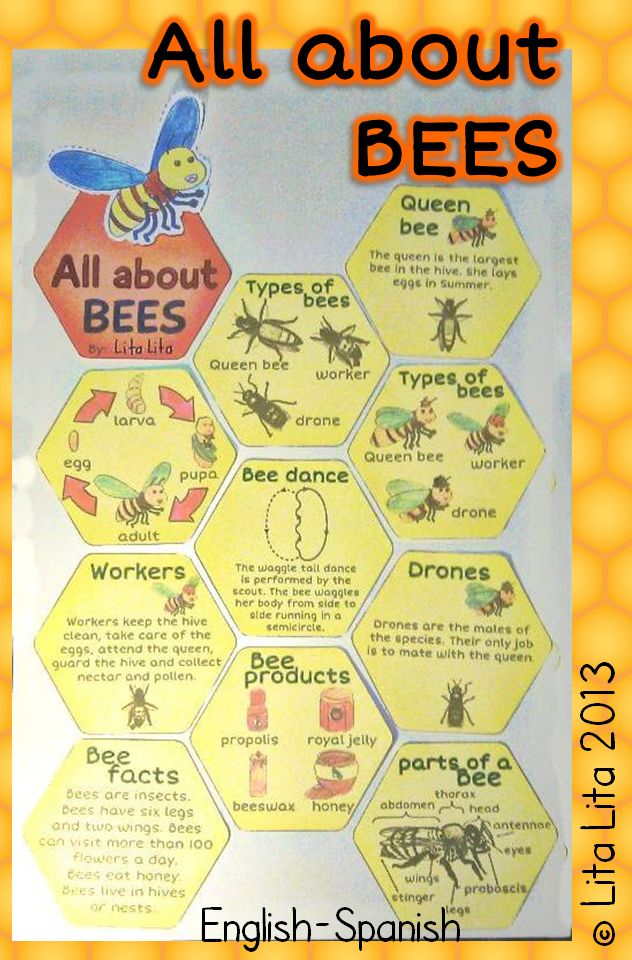 And if the hive is placed in an installation with an even stronger electric field, there is a sharp excitation of the bees, the temperature inside the nest rises and the whole family flies out. Consequently, the natural electric field benefits living beings, and the artificial one harms them.
And if the hive is placed in an installation with an even stronger electric field, there is a sharp excitation of the bees, the temperature inside the nest rises and the whole family flies out. Consequently, the natural electric field benefits living beings, and the artificial one harms them.
Dance to convey information about distance
If the new source of nectar or pollen is far away, the "scout" introduces subtle variations to the dance. The bee dances in the shape of a figure eight with intermittent movements in the middle of the figure. The distance at which the change occurs, from a circle to a figure eight, varies in different species of bees. This does not lead to confusion since the distance is constant for each hive.
The top row shows a dance pattern in which a bee indicates to other bees in the hive the distance and direction of a new food source.
Every move of the scout matters to the other bees. They can report the distance to the source of food by the number of circles in a certain time interval, as well as by the bending of the abdomen. The greater the distance, the slower the belly bends. The direction where the food is is indicated by the direction and angle at which the dancing bee crosses the circle. If it passes through circle at the top of , the other bees realize that they will find food if they fly towards the sun. If the bee crosses circle below , they should be flying from the sun.
The greater the distance, the slower the belly bends. The direction where the food is is indicated by the direction and angle at which the dancing bee crosses the circle. If it passes through circle at the top of , the other bees realize that they will find food if they fly towards the sun. If the bee crosses circle below , they should be flying from the sun.
If the bee crosses the circle at an angle, the other bees know that they must fly to the right or left of the sun at the same angle that the dancer moved to the left or right of the imaginary vertical line.
This beautiful performance of dancing bees is truly amazing in the insect world. When we consider the complex elements of the dance and the detailed information that all the bees of the world convey and understand through the dance (von Frisch spent 20 years deciphering them), we have every right to doubt the seriousness of the claims that this process could evolve.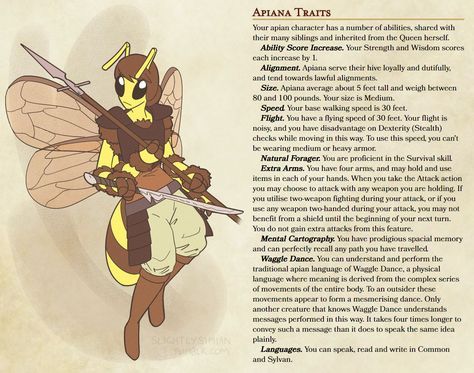
Among the wonders of God's creation, the bee is a marvelous proof against evolution in favor of the Creator's design and purpose. The finely coordinated language used for the survival of bees has too many necessary and independent parts of the system for them to ever evolve. Logic and common sense tell us that the whole process was characteristic of bees at all times, starting from their very creation. Like the bees themselves, it could not evolve.
Characteristics of the wagging dance of the bee
During this dance, the insects begin to wag their abdomens, but they only do this by running straight, the bee dance is like a figure eight. The flapping of the abdomen tells where the honey plant is located, the more there are, the closer it is.
Waggling dance of bees
When the nectar is 6 km farther from the hive, then the bee will wag its belly 8 times in 1 second. In the case of 20 wobbles per second, the nectar is one kilometer away. An important role is played by the pace at which they dance:
- When an insect draws up to 10 circles in 15 seconds, the food is very close - approximately 100 meters from the hive.
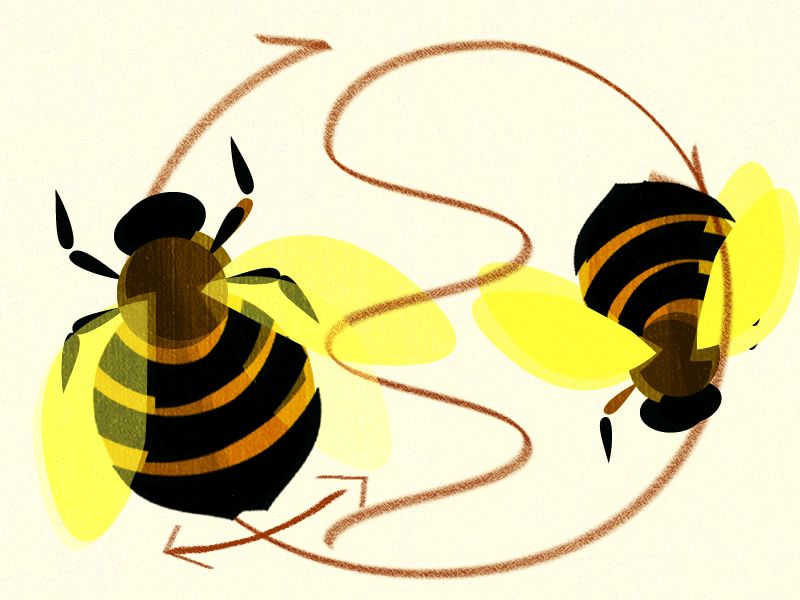
- Draws 7 circles in 15 seconds, food is 200 meters away.
- If 4.5 laps is 1 km, two laps is 6 km.
Bees can tell you which direction the nectar is in by dancing. If the surface is horizontal, the dance takes place at the notch, while the line that connects the figure eight goes in the direction where the food is. When a bee dances straight, it will run in the right direction. A working species carefully studies everything, can remember the angle shown at the notch, then begins to fly for a bribe. So they dance in clear weather with a clear sky and the sun. In the hive, things are different. 90Pokémon SongsRomantic MusicWorkout MotivationMusic for SexMusic in the CarFor Strength Training2017 Grammy Award
The Importance of Bee Dancing for Beekeeping and Agriculture
Anyone who travels abroad, knowing the appropriate language, will get more pleasure and benefit from the trip than his companion who does not know a foreign language. The situation is approximately the same with the beekeeper in his relations with the bees.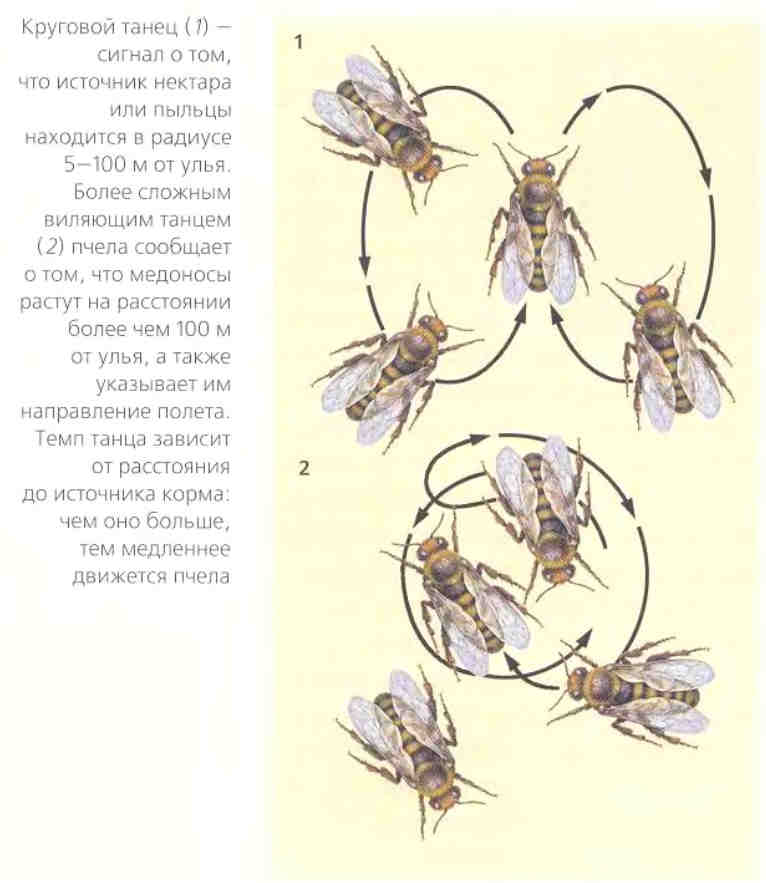 Knowing their "language", he gets the opportunity to make the bees better serve their purposes.
Knowing their "language", he gets the opportunity to make the bees better serve their purposes.
In the summer, when the time of the main bribe has passed, some plants still continue to bloom. However, their nectar springs are no longer as abundant as they were a few weeks ago. The experienced beekeeper knows that in many meadows the sow thistle flowers, now stretching hundreds of thousands of their tall flower heads surrounded by green sepals, could give him a few more kilograms of honey.
But the bees no longer have a real craving for gathering activity. On the heads of sow thistle, you can find mainly bumblebees. They have an advantage over bees due to their longer proboscises, and there is not so much nectar in the flowers of these plants that dancing can significantly increase their visits by bees. The beekeeper wants to tell his bees that they should not sit at home doing nothing and that they should get what is still there from the heads of the sow thistle.
He can do this if he knows the language of bees.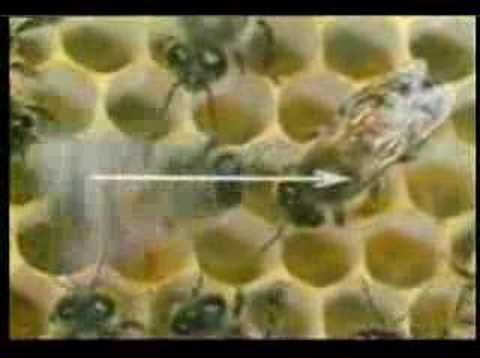 It is enough for him to attract just a few bees from the families of his apiary with honey or sugar syrup to a bunch of thistle and feed them on his flowers, sprinkled with such a syrup. Returning home, these bees will dance, and the smell they bring will tell you which plant is the source of the bribe. Soon their girlfriends will start to fly out of the hive and look for the smell of thistle. Visiting heads of thistle thistle will increase many times over.
It is enough for him to attract just a few bees from the families of his apiary with honey or sugar syrup to a bunch of thistle and feed them on his flowers, sprinkled with such a syrup. Returning home, these bees will dance, and the smell they bring will tell you which plant is the source of the bribe. Soon their girlfriends will start to fly out of the hive and look for the smell of thistle. Visiting heads of thistle thistle will increase many times over.
In practice, this technique has been modified and simplified in various ways. Instead of feeding bees on sow thistle flowers, you can give them sugar syrup with the aroma of these flowers in the hive. For this, pure sugar syrup is insisted on sow thistle flowers for several hours. The flowers of other plants, which, after immersion in sugar syrup, change their smell, are put dry in the feeder and, after pouring a little sugar syrup into it, they are placed in front of the entrance of the hive. Thus, advanced beekeepers can, without much effort, obtain significant collections of honey from thistle and other honey plants during such periods when bees do not collect anything in neighboring apiaries.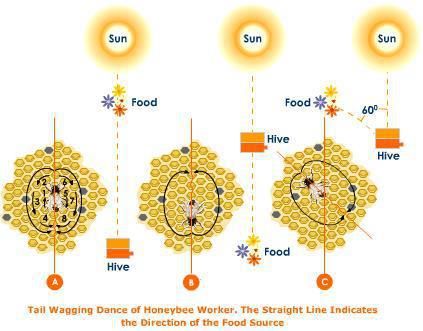
It is often necessary to direct bees to certain plants in order to improve their pollination and increase seed production. This is the case, for example, with the production of the much-needed seeds of one of our most important fodder plants, the red clover. Pollination of its flowers is difficult and unreliable. It is not easy for bees to reach with their short proboscises to the base of the flower tube to extract nectar from these bumblebee flowers. Where red clover is grown in large areas, there are not enough bumblebees to pollinate millions of individual flowers, and bees do not show much inclination to visit the fields of this plant - they are more willing to turn to more reliable sources of bribes. Only in some, rare years, when red clover produces a lot of nectar, bees visit it more actively, but usually yields of clover seeds are low.
This grief, however, is easy to help. At the edge of the clover field, hives with bees are placed. Then, in the manner described above, with the help of a syrup with the smell of red clover flowers, the bees are mobilized, thus achieving greater attendance.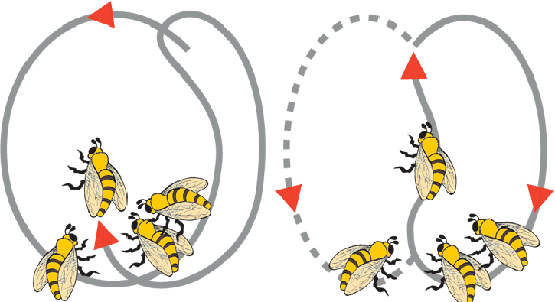 This technique increases the seed yield by an average of 40%
This technique increases the seed yield by an average of 40%
Thanks to reliable yields, the technique of "controlling the flight activity of bees by smell" (training) quickly attracted the attention of seed growers *. Applied so far only in some areas, it will certainly soon become widespread in areas of intensive agriculture.
After all, in order to direct the bees to work, using their own "language", it does not require much effort, but meanwhile this technique helps the beekeeper fill buckets with honey and gives a large increase in agricultural yields.
Analysis of the dance
A detailed analysis of the dance was later undertaken. The trajectories of different points of the body of the dancing bee were reproduced. A comparison of the trajectories showed that they differ both in their length and in their configuration. This led to the conclusion that the movement during the dance is not simple, progressive, but complex and predominantly rotational, and therefore the correct idea of the dance can be given by the trajectory of the set of points of the dancer's body, in the simplest case, its longitudinal axis.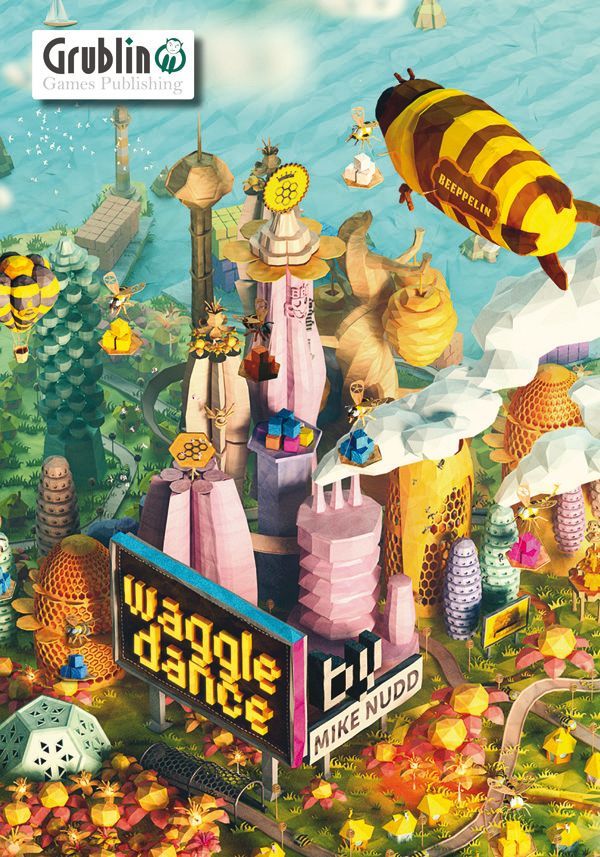
When comparing the successive positions through which the longitudinal axis of the dancer passes during the eight and circle dances, it was found that both dances are built from the same structural elements, but taken in different proportions. In a circular dance, rotational movement predominates, in a figure-of-eight dance, a straight run. Their quantitative ratio depends on the distance of the dancer's flight preceding the dance.
As the distance to the food source increases, the duration of the straight run increases, as a result of which the phases of rotation are anticipated. Thanks to the evidence obtained for the unified principle of constructing the figure-of-eight and circular dances, there are no grounds for opposing them to each other, the question of the reasons for the use of two language systems by the honey bee is removed, and the contradiction between the continuity of the change in the flight range parameter and the twofold way of transmitting messages about the values of this parameter is eliminated. The different messages contained in the circle and eight dances are formulated in the same language.
The different messages contained in the circle and eight dances are formulated in the same language.
Reproduction and longevity
Depending on different intra-family circumstances, a bee swarm emits buzzing sounds that are different from one another in timbre and height. Therefore, experienced beekeepers are quite capable of understanding what is happening inside the bee house by the sounds of the hive.
The noise of the nest makes it possible, for example, to find out that the insects inside it are cold. He also talks about other problems, because each caste of the family "sings" with its own voice.
When the inhabitants of the hive are about to swarm, they also emit strictly defined sounds. This happens when the members of the nest have decided to split into two families. At the same time, one part of the swarm flies away with the old experimental queen. And in the bowels of the former, a young female is grown.
For the development of the future queen bees build special combs. This "queen" of the family comes from a fertilized egg. And when it turns into a larva, it is fed with special milk. It depends on the quality of the feed: whether an ordinary worker bee or a queen will come out of a female egg.
This "queen" of the family comes from a fertilized egg. And when it turns into a larva, it is fed with special milk. It depends on the quality of the feed: whether an ordinary worker bee or a queen will come out of a female egg.
The ability to reproduce the flock of bees in the latter appear already at the age of ten. The queen bee has a huge number of contacts with drones during her life. And they are calculated not even in billions, but in a figure with a huge number of zeros.
At the same time, the mass of eggs that the successor of the bee family lays per day often exceeds its own live weight. But with the age of the uterus, the quality of the offspring changes. At the same time, in the third year of life, more and more drones appear in the hive, and this is already bad for the survival of the family.
Worker bees usually exist in the world for no more than 40 days. But if they appear in the family closer to autumn, then, including the passive winter period, they can live up to six months.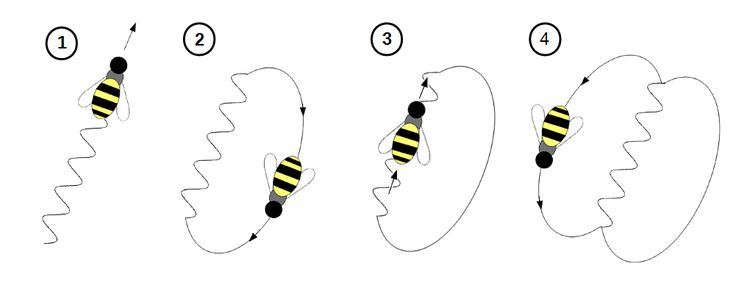 The lifetime of drones is even less. However, the uterus in this sense is the champion. She is able to sometimes live up to 4 years.
The lifetime of drones is even less. However, the uterus in this sense is the champion. She is able to sometimes live up to 4 years.
Amazing bee dance
The bee dance is an integral part of the whole family of furry insects. It consists in the following - scout individuals, having discovered lands with a large number of honey plants, fly into the hive and report their find with the help of unusual fast movements. Insects, moving along the hive in a special way, transmit in this way a message about the location of the source of food, located a few meters from the dwelling. The slower the dance, the further away the food is from the hive. Working insects repeat this dance, thereby accepting the information transmitted to them by scouts, and fly in the right direction. So surprisingly worked out in these extraordinary creatures is the notification system about the location of the cherished lands.
A perfect creation of nature, the honey bee evokes great respect and indescribable delight with its short and active life, dedication and great diligence.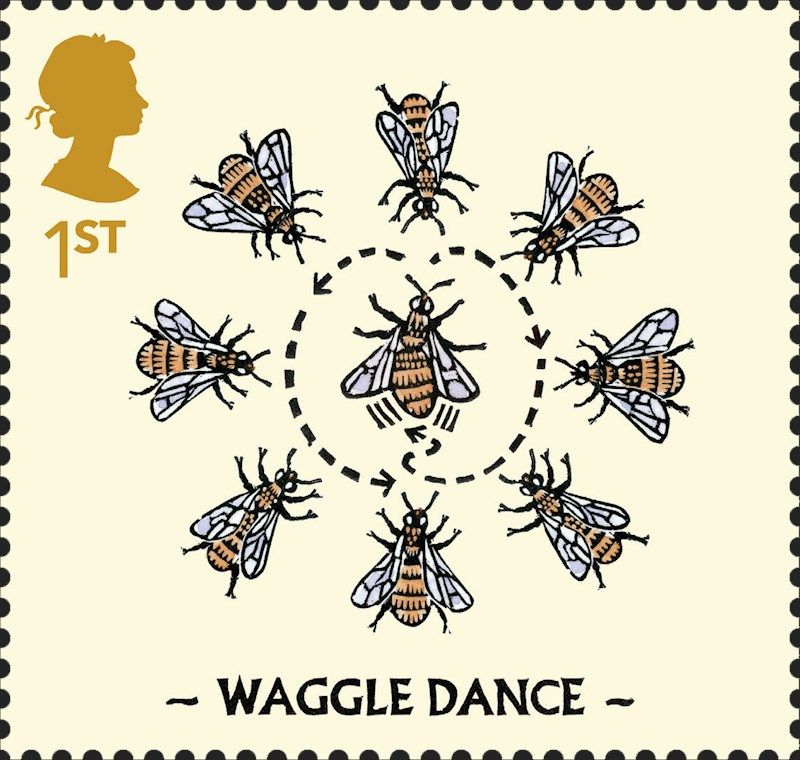
Hymenoptera constitute one of the most numerous (over 100,000 species) and highly organized orders of insects. These are the best flyers and therefore they have the most strongly differentiated chest muscles. Representatives of this order are characterized by two pairs of transparent membranous wings. The forewings are always larger than the hindwings.
This order includes bees, wasps, ants, riders, bumblebees, etc. Many species live in large colonies or families (bees, etc.).
Waggling dance
The movements during this dance resemble a figure of eight and have a semicircular shape. The bee runs straight and moves its belly. The proximity of the found honey plant is determined by the number of hits. The more the insect shakes its abdomen, the closer the food source is. 8 movements per second means that the honey plant is 6 km from the hive. If a bee makes 20 movements per second, the food source is about a kilometer away.
Bees resort to wagging dance when honey plants are in the distance.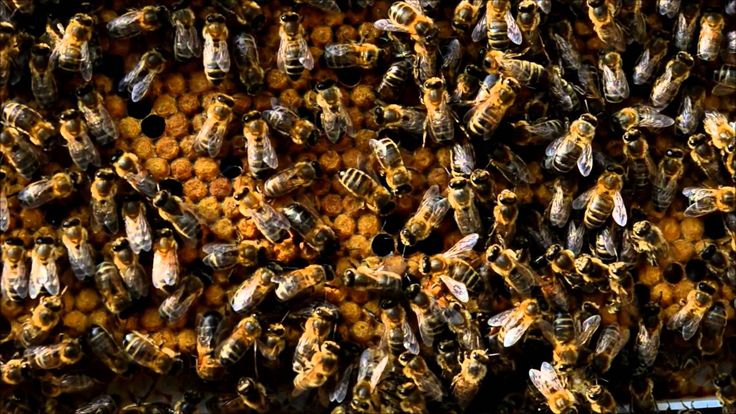 It is determined by the number of not only belly punches, but also by the circles performed. If the honey plant is about 100 meters from the hive, the bee will make about 10 circles in 15 seconds. If at the same time he makes 7 circles, then the distance will be double, 4 circles - 1 km, 2 circles - 6 km.
It is determined by the number of not only belly punches, but also by the circles performed. If the honey plant is about 100 meters from the hive, the bee will make about 10 circles in 15 seconds. If at the same time he makes 7 circles, then the distance will be double, 4 circles - 1 km, 2 circles - 6 km.
With the help of the wagging dance, the bee can not only determine the distance to the honey plant that she has found, but also indicate the direction in which she should fly. If the insect dances on the notch (horizontally), then the figure-eight line is the direction to the honey plant. A certain distance is made between the semicircles of the figure eight: it corresponds to the angle of deviation of the flight relative to the Sun.
How and when is the wagging bee dance performed?
Waggling dance of bees
wagging their bellies
If we talk about specific numbers, then, for example, if a bee waggled its belly about eight times in one second, then most likely the honey plant is at a distance of about 6 kilometers. If the strokes become more frequent and reach 20 per second, then the honey plant is noticeably closer, approximately at a kilometer distance. But not only strokes are important, but also not the immediate pace of the dance. Usually everything is measured in the number of circles that the insect passes in 15 seconds. If there are about 10 circles, then the food is about 100 meters away, very close. By increasing the pace to 7 laps in the same time, we can conclude that the food is twice as far, at a distance of about 200 meters. If there are 4.5 circles, then the distance increases to a kilometer, if there are only two circles, then the distance can be up to 6 kilometers.
Interestingly, the accuracy of distance estimation by bees is affected by the wind. If he was oncoming, then it seems to them that they flew more - and vice versa.
The dance can also demonstrate the direction where the nectar is located - the figure eight seems to be heading in the right direction. If the bee is just dancing straight ahead, then it will run in the direction it needs to move.
The complexity of the "language of dancing"
This communication system is used by the bees
in their daily work together and is quite flexible. After all, in the basis of
"Language of dances" are the innate actions of individuals and the experience acquired as a result of
training. For example, each forager who has flown into a hive with rich prey knows instinctively how to perform the dance, but experienced foragers more fully
indicate the source of food. And in order to read information, young bees
have to learn by learning the “alphabet of the dance language” in order to associate its type and
individual dance elements with a certain place on the feeding area and
etc.
The deeper the research into the unique language of
bees, the more complex it seems to be. It turns out that the distance to food
bees are able to show and specify by eleven parameters of the dance - its duration,
tempo, the number of wiggles of the abdomen, the duration of
sound signals accompanying the dance. Many studies, including modern ones with the help of
film and video shooting, show the wide possibilities of bees, which provide
with high targeting accuracy. If the scouts, when searching for food, were forced to
go around the hill, then in the dance they indicated the direct direction, and the distance - with
taking into account the efforts expended on flying around the hill. In one of the series of experiments, a tunnel was placed in front of hive
, and a container with syrup was placed either at the end of it or behind
at a right angle. In the first case, the bees indicated the exact distance
in a straight line. And in the second - the direction indicated by the scouts corresponded to
hypotenuse of the angle of rotation. If the tunnel was round or V-shaped, the dances of
bees were so complex that they could not be deciphered.
Along with its uniqueness, the language of bees at the same time
is also somewhat limited. Thus, bees are able to transmit
Thus, bees are able to transmit
information about the availability of food only in the horizontal plane. There is no
concept of "up" in their language - innate knowledge shows the bees that flowers cannot grow
in heaven. This was established empirically, when the hive was placed at the bottom of the
radio tower, and the food was at the top. The bait was shown to the scout bees, but they could not
mobilize the pickers there. These restrictions on the language of bee dancing testify
of its "closedness", while human languages are an excellent open
system.
How long a bee lives
A wild or domestic honey bee has a rather short lifespan: in summer it is two to three months. If we are talking about a wintering worker bee, then we should talk about a longer life expectancy - from six months to eight months. The lifespan of a bee as a whole depends on its “layout” during work.
Worker bees perform most of the functions in the family and are engaged in all kinds of work, except for laying eggs.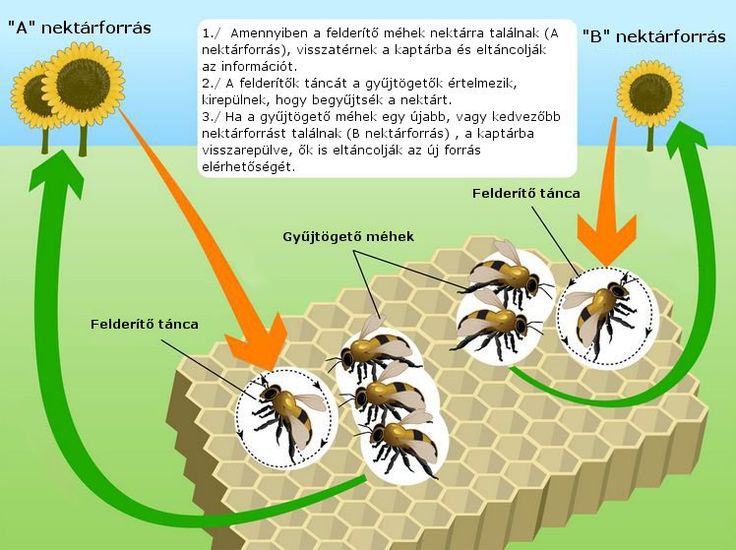 The wide scale of work performed by bees is a completely understandable fact, because the body of an average bee is naturally predisposed and adapted to perform work:
The wide scale of work performed by bees is a completely understandable fact, because the body of an average bee is naturally predisposed and adapted to perform work:
- they have an excellent sense of smell, thanks to which they find and recognize food;
- the eyesight of the honey bee is excellent;
- well-developed wings, with the help of which the hive is ventilated;
- devices with legs which they use to collect pollen;
- sting - a means of defense against the invasion of enemies.
A feature is the presence of glands in bees that produce milk for feeding the larvae.
The gatherer indicates the direction in which to fly for honey with figures in a dance. Depending on the position of 3 points: the sun, the hive and the land, the insect chooses movements, the intensity of the wobbles and the duration of the circling. The points of the hive and the ground are constants, while the position of the sun is variable. Depending on the angle formed by the movement of the sun relative to constant values, the movements of the insect change.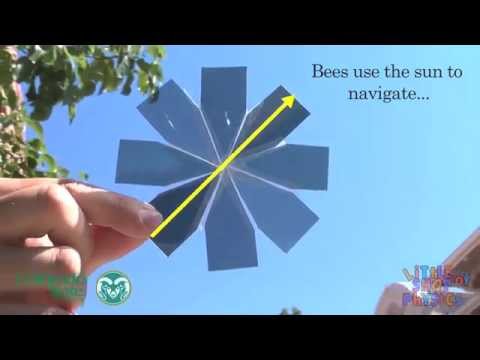
Figure 2. Dependence of the movements in the dance of the bee on the position of the sun relative to the hive and land
Thus, the dancing female gatherer indicates the path to the honey plant precisely by wagging the run in a straight line. As you can see from the figure, the waggling run is not always the same.
Eights are written to insects in different ways:
- The dancer moves upside down. She crawls in a straight line connecting the semicircles of the figure eight. The right semicircle is described clockwise, and the left semicircle is described counterclockwise.
- The bee moves upside down. The right semicircle is described counterclockwise, and the left semicircle is described clockwise.
- The picker moves horizontally.
The figures of the dance of the bee change depending on the position of the sun in the sky.
It should be said that not every insect that brings nectar to the hive dances. If the bribe is rich, then the picker moves harder and calls more bees to the honey plant.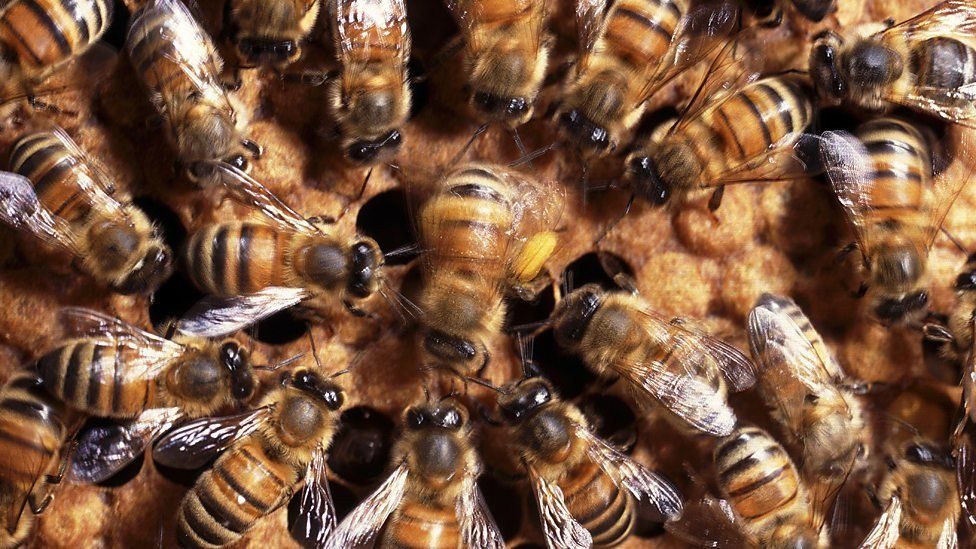 However, if the bribe is scarce, then the insect carries the nectar into the honeycombs, but does not dance.
However, if the bribe is scarce, then the insect carries the nectar into the honeycombs, but does not dance.
The behavior of the barker is influenced by the wind. If it is passing, then the bee dances as if the bribe is closer. With a headwind - slower.
The same regularity was revealed during the flight of the female picker up the mountain or down to the honey plant.
In 1952 an amazing discovery was made. It turns out that the behavior of insects is affected by the amount of nectar and bee bread in the hive. If there are few of them, then the bees call each other for meager bribes.
Regardless of the position of the hive (horizontal and vertical), the patterns of the dance do not change. Only if the bees are forced to move backwards in the horizontal position of the hive with the notch turned towards the ground do they start to get confused. The reason for this is the invisibility of the sun for bees.
The following conclusions can be drawn from the above:
- Bees transmit information to each other using a certain set of movements called the bee dance.

- If the honey plant is close, the forager announces this with another circle dance.
- A waggle dance is performed if the bribe is far from the hive. The movements in this dance depend on the position of the sun. Orienting along it, insects indicate the direction to the honey plant, showing the distance to the bribe by wagging the abdomen.
The scouts, performing their dance, with his help inform other forager bees about the location of food,
the direction of flight to a rich food source, and other information. If the food is
close, then a circular dance is performed - the bee moves in a circle. If
the distance to the stern is more than 100 m, then a wagging dance is performed. This dance of
contains complex information about both the distance to the feed and the direction in which
should fly. In this case, the distance is encoded as a duration
a straight run in dance accompanied by a certain buzzing sound. And
the direction of flight with respect to the Sun is reported using the angle between the line
direct run and the direction of gravity. Thus, the scout is endowed
Thus, the scout is endowed
with the ability not only to remember landmarks and draw up an "internal map"
of the flight to the food source, but also to encode this information in order to express it
in the language of dance and pass it on to her fellows. At the same time, the scout bee acts
by an experienced cryptographer, having genetically embedded codes and how to use them
. Other gatherers carefully observe the nature of her movements and
translate for themselves the "language of the dance" into information about where the source is. That
is they decode it using the same innate encryption mechanism.
At the same time, for purposeful movement to the food, the observer bees again
recalculate the value of the dance angle in relation to gravity in the value of the angle
in relation to the Sun.
The smell that the "dancer" has been imbued with indicates
which flowers are meant to be visited. But if the food source, for example,
a feeder with sugar syrup, has no smell, the bee will definitely mark it with
secretions of the odorous gland, and this gland protrudes when dancing.
Scientists have come to the conclusion that bees can
use static electricity as a means of communication, as a signal
information inside the hive. Probably the inhabitants of the hive distinguish
scout dancer from all incoming forager bees (although they all smell of
prey) by higher charges of her body. The gatherers follow her to watch the
"dance"—the story of a rich source of food. It should be noted
that an artificially created external electric field is a significant
environmental factor, negatively affecting the behavior of insects, disturbing their
comfort and preventing movement. Thus, bee colonies in hives located under
power lines (power lines) are weakening and are characterized by low productivity. A
if the hive is placed in an installation with a larger electric field than near power lines,
there is a sharp excitation of bees, an increase in temperature inside the nest, and
the flight of the whole family.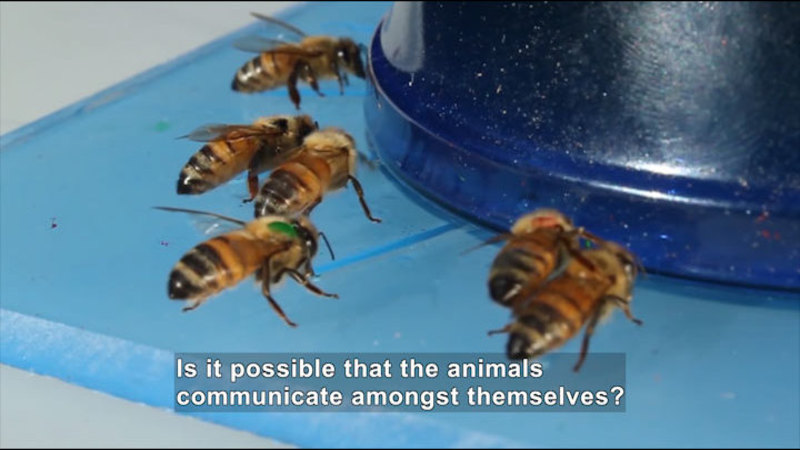 Consequently, the natural electric field helps living beings, while the artificial one harms them.
Consequently, the natural electric field helps living beings, while the artificial one harms them.
A bee dance instead of words
Bees, unlike people, by their very nature cannot speak. But they, like us, need to transfer any information to each other. Therefore, when communicating with each other, they use a kind of “sign language”. Why do they need it? For example, when one of the insects found a new place to collect a large crop of pollen and nectar. Before starting to collect everything alone, the bee must tell this news to other bees so that they fly to this place and collect everything together. This unusual way of transmitting messages is called the bee dance.
This dance has 2 pas. If a bee has found a good crop within a radius of one hundred and ten meters from the dwelling, it undertakes to fly in circular motions. What does an insect do if such a place is much further from their home? The bee begins to describe this figure, which consists of two connected straight rings.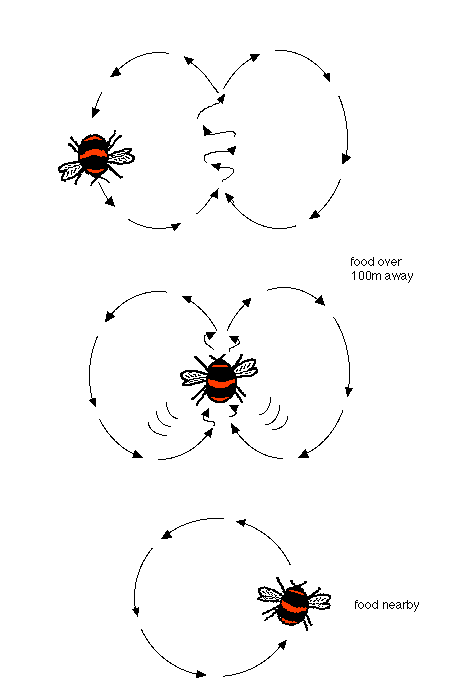 The line that connects these circles depicts the path that other insects need to fly. The amount of distance to the destination depends on their dance. The slower the dance of the insect lasts, the longer it takes to get to the destination.
The line that connects these circles depicts the path that other insects need to fly. The amount of distance to the destination depends on their dance. The slower the dance of the insect lasts, the longer it takes to get to the destination.
Surprisingly, the dance of the bees can accurately determine the distance they need.
If the bee is dancing fast, “merrily” and lively, it means that it has found a good crop to collect pollen and will bring many helpers with it. In order to find out which plant the bee found, other insects sniff it. It follows that the dance of the bee conveys almost all the information about how far away the crop is and what its fruits are. "Sign language" is very helpful for bees to communicate with each other and understand each other. It is impossible not to agree that every minute you learn a lot of new and interesting things about the life of striped insects!
Function
Such dances mobilize sitting bees. Some of them rise in an instant and fly after the ringleader. By its aroma, they look for the necessary honey plant. Returning home, they continue to perform ballet steps, involving representatives of their own species remaining in the hive in the process. Due to this, they collect only a certain type of nectar, which has its own, special flavor. If the food does not exude any aroma, then the aromatic gland is included in the work.
By its aroma, they look for the necessary honey plant. Returning home, they continue to perform ballet steps, involving representatives of their own species remaining in the hive in the process. Due to this, they collect only a certain type of nectar, which has its own, special flavor. If the food does not exude any aroma, then the aromatic gland is included in the work.
The bee language is very complex and multifaceted, there is a whole set of specific movements that can characterize the performance of various actions. In order to realize it, it is necessary to fully engage in the foundations of the life of small workers.
Significance during swarming
When swarming, bee communication plays an important role. The hatched bees prefer to stay nearby, but the scouts are tirelessly looking for a new home. If they find a suitable one, they show the rest of the swarm where to fly, where to build a new nest. Such manipulations occur without the presence of food, they are longer in time.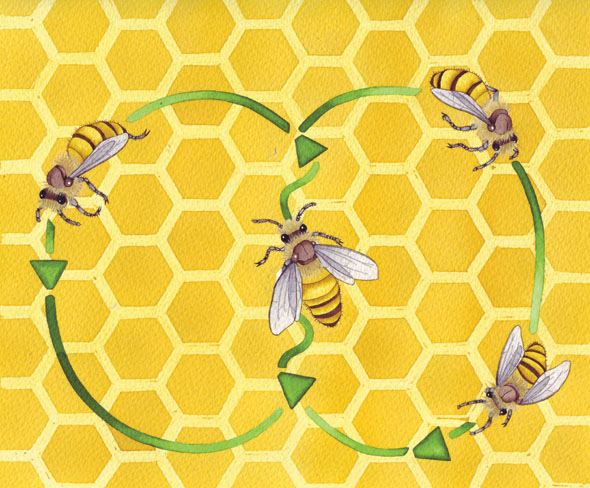
This is how little lovers of beauty communicate with each other. This is another point worth learning from the striped hive dwellers. If people could communicate through art, then there would be much less aggression in this world!
General description
The appearance of bees is represented by a three-part body: head, chest and abdomen. The entire surface of the body of bees is covered with small hairs, of which one part serves as a function for touch and is also connected with the nervous system. The most sensitive organ of the bees is the antennae, which allow them to navigate in the darkness of their hives. Due to the presence of a movable jaw, bees are able to build large wax cells, as well as collect pollen from plants and exit a closed cell.
Adult bees measure between 12 and 15 millimeters. Their abdomen is represented by 6 segments, on which rather thin and elastic wings with transparent veins are attached. On the head of these insects there are two large ones, and on the crown of the head there are three more small ones, which are used to recognize polarized light, so that they can navigate by the sun.
In the region of the back of the abdomen there is a stinging organ, which includes two poisonous glands and a sharp sting with a length of up to two millimeters. The shape of the sting makes it easy to sink into the skin of an animal or person. When it hits, the bee injects its poison, and then dies.
A sting of five hundred or a thousand bees can be fatal. Adults can reach very high speeds, as well as move up to 4 kilometers from the territory of the hive.
Information exchange and "language of dancing". Created nature through the eyes of biologists. Behavior and feeling of animals
Information exchange and dance language
The social organization of bees undoubtedly involves interaction between family members through the exchange of information. One example of bee communication is their ability to convey to each other precise information about where in space a food source is located and how to reach this point more conveniently.
Bees, like other insects, communicate chemically with the help of pheromones produced by the external secretion glands. This "language" allows you to communicate with your fellows and coordinate certain joint actions. Thus, the secretions of the queen of bees in a small hive inhibit the behavior of working individuals that raise other queens, and the alarm pheromone calls for an attack by bees on a person or animal located near their nest. After one bee stings, a whole swarm can fly to her aid very quickly. After all, before stinging, the bee releases a pheromone into the air, which is able to call fellow tribesmen even at its concentration of only a few molecules per cubic centimeter of air.
Chemical regulation is very interesting and little studied.
The wings of the bees, in addition to their main purpose, also provide an audible signal. With different shades of their buzz, the bee creates different signal effects. Beekeepers have been using this knowledge in practice for a long time. The buzzing of bees becomes special before swarming - the departure of a new family from the hive. In the apiary, this is determined using a microphone and a specially designed amplifying system. Automatically recognized changes in sound vibrations are sent to the beekeeper's house. The signal notifies that it is time to take action so as not to miss the formed swarm.
The buzzing of bees becomes special before swarming - the departure of a new family from the hive. In the apiary, this is determined using a microphone and a specially designed amplifying system. Automatically recognized changes in sound vibrations are sent to the beekeeper's house. The signal notifies that it is time to take action so as not to miss the formed swarm.
The language of dancing. Almost everyone knows about the dances of bees. According to scientists, they are extremely accurate and expressive. The bees have mastered them so much that by means of certain movements they explain to their fellows where the source of food is located, how far to fly for nectar, how to get to the desired field, where to make turns or how to avoid obstacles.
The existence of such a peculiar "language of dancing" was proved in the 20s of the last century by the famous German physiologist and ethologist Karl von Frisch, who conducted the first experiments with bees and deciphered the mechanism for transmitting information by them.
It was obvious to the scientist that the bees have an excellent reconnaissance service, but it was not clear how a group of relatives for prey is organized. To identify the mechanisms of such communication, Frisch followed the behavior of scout bees who tasted sugar syrup in the feeder. He was amazed when the scout, returning to the hive, performed a circular dance on the honeycombs. In doing so, she led to a strong excitement of the nearby other bees, who immediately flew to the feeder. Further research showed that the dance of the bees is much more complicated than it initially seemed.
Frisch's discovery was questioned for a long time, it was assumed that the scout was using scent to invite her to fly. Scientists did not believe that the bee is capable of transmitting information using the most sophisticated system of remote (visual) guidance. After all, it includes abstract symbols, which is typical for the language.
An ideal solution to the dispute could be the results of an experiment with robotic bee dances under human control.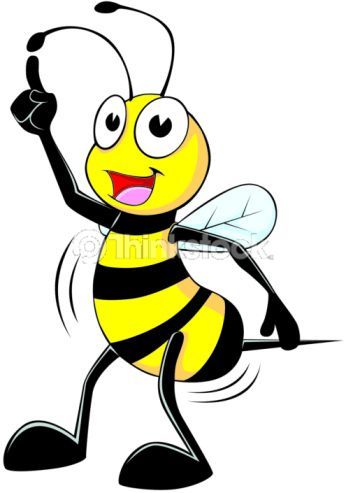 And indeed, in this way, it was possible to enter into a dialogue with the family of bees, who perceived the dance of the artificial bee as information about the distance to the feeders.
And indeed, in this way, it was possible to enter into a dialogue with the family of bees, who perceived the dance of the artificial bee as information about the distance to the feeders.
The very fact that the bees used the “language of dances” was confirmed, the decoding of which is still ongoing. Later, Karl von Frisch received the Nobel Prize, and the world was forced to admit that not only the so-called "higher" animals, but also a modest invertebrate creature, the bee, are capable of transmitting information in symbolic form.
Information in the dance. Performing their dance, scouts use it to inform other foraging bees about the location of food, the direction of flight to a rich food source, and other information.
If the food is close, then a circle dance is performed - the bee moves in a circle. If the distance to the feed is more than 100 meters, the dance will be wagging. It already contains complex information about both the distance to the feed and the direction in which to fly. In this case, the distance is encoded as the duration of a straight run in a dance, accompanied by a certain buzzing sound. And the direction of flight with respect to the sun is reported using the angle between the line of direct run and the direction of gravity.
In this case, the distance is encoded as the duration of a straight run in a dance, accompanied by a certain buzzing sound. And the direction of flight with respect to the sun is reported using the angle between the line of direct run and the direction of gravity.
Thus, the scout is endowed with the ability not only to remember landmarks and draw up an “internal map” of the flight to the food source, but also to encode this information in order to express it in the “language of dance” and pass it on to her fellows.
At the same time, the scout bee acts as an experienced cryptographer, having genetically embedded codes and ways to use them. Other pickers carefully observe the nature of her movements and translate for themselves the "language of dance" into information about the place where to fly. That is, they decode it using the same innate encryption mechanism. And for a purposeful movement towards the food, the observer bees again recalculate the value of the dance angle in relation to gravity into an angle in relation to the sun.
The smell that the "dancer" soaked in indicates which flowers are intended to be visited. But if the source of food, such as a feeder with sugar syrup, is odorless, the bee will definitely mark it with secretions from the odorous gland, and this gland protrudes when dancing.
Scouts of swarming bees perform similar dances. They use visual information to communicate not only
food, but also a suitable location for a new nest. Understanding the content of the dance of the scout of swarming bees, the specialist can accurately determine the place of their intended nesting.
Recently, "scaring" dances have been opened, which notify of the threat of insecticide poisoning, which clearly demonstrates the flexibility of the real behavior of bees. This indicates their ability to adequately respond to human activities that threaten the lives of individuals and the entire family. In addition, this confirms the existence of a system for translating dangerous situations into the “language of dances”.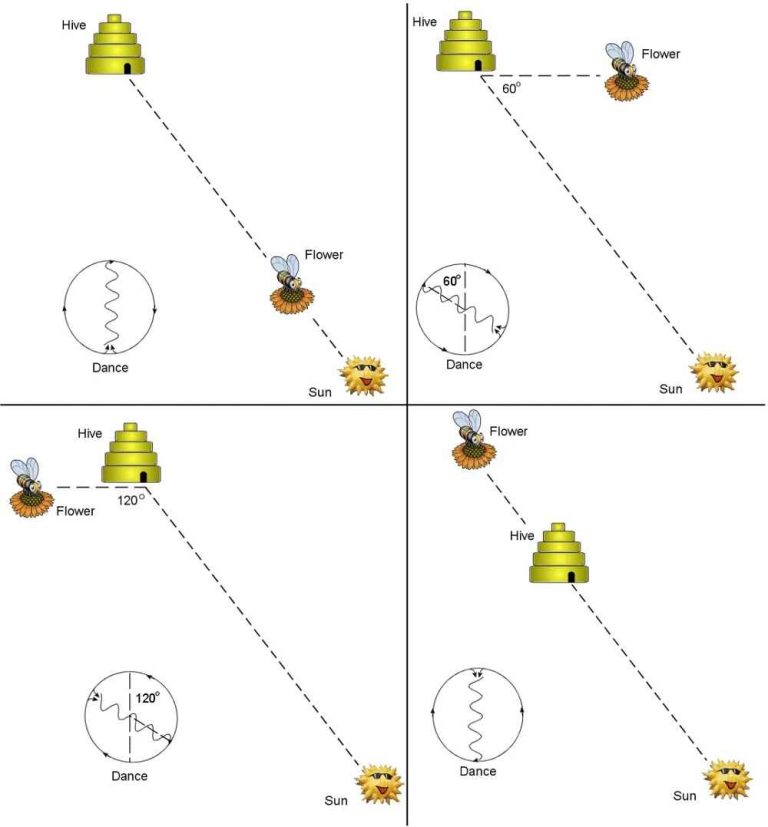
Experimental studies of the "language of dancing". Bees can use static electricity as a means of communication for signaling information. It is likely that the inhabitants of the hive distinguish the scout dancer from all incoming foragers (though all of them with the smell of prey) by the higher charges of her body. The pickers follow her, watching the dance-story.
At the same time, an artificially created external electric field is a significant environmental factor that negatively affects the behavior of insects, disturbs their comfort and prevents movement. Thus, bee colonies in hives located under power lines (power lines) weaken and are characterized by low productivity. And if the hive is placed in an installation with an even stronger electric field, there is a sharp excitation of the bees, the temperature inside the nest rises and the whole family flies out. Consequently, the natural electric field benefits living beings, and the artificial one harms them.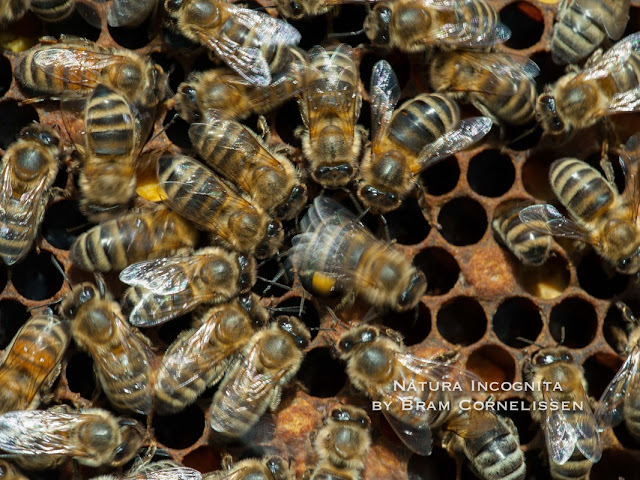
“Dance language” as a communication system is used by bees in their daily work together, and this means of communication is quite flexible. After all, it is based on the innate actions of individuals and the experience acquired as a result of training.
For example, every forager who has flown into a hive with rich prey knows instinctively how to perform the dance, but experienced foragers indicate the source of food more fully. And in order to read information, young bees have to learn the “alphabet of the dance language” in order to associate its type and individual dance elements with a certain place in the foraging area.
The deeper the research into the unique language of bees, the more complex it appears to be.
It turns out that bees are able to show and specify the distance to food by eleven parameters of the dance - its duration, tempo, the number of belly wiggles, the duration of the sound signals accompanying the dance. Studies, including modern ones with the help of film and video filming, show the wide possibilities of bees to indicate targets with high accuracy.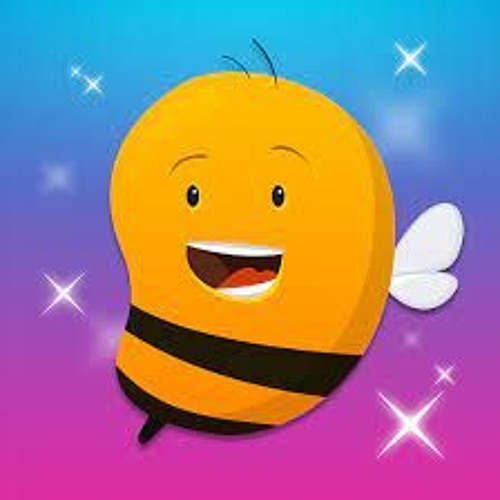 If the scouts, when searching for food, were forced to go around the hill, then in the dance they indicated the direct direction, and the distance, taking into account the efforts expended on flying around the hill.
If the scouts, when searching for food, were forced to go around the hill, then in the dance they indicated the direct direction, and the distance, taking into account the efforts expended on flying around the hill.
In one of the series of experiments, a tunnel was placed in front of the hive, and a container with syrup was placed either at the end of it or behind the turn at a right angle. In the first case, the bees indicated the exact distance in a straight line. And in the second - the direction indicated by the scouts corresponded to the hypotenuse of the angle of rotation. If the tunnel was round or V-shaped, the dances of the bees were so complex that they could not be deciphered.
At the same time, the “language of the bees” also has some limitations. Thus, bees are able to transmit information about the availability of food only in a horizontal plane. There is no concept of "up" in their language - innate knowledge shows the bees that flowers cannot grow in heaven.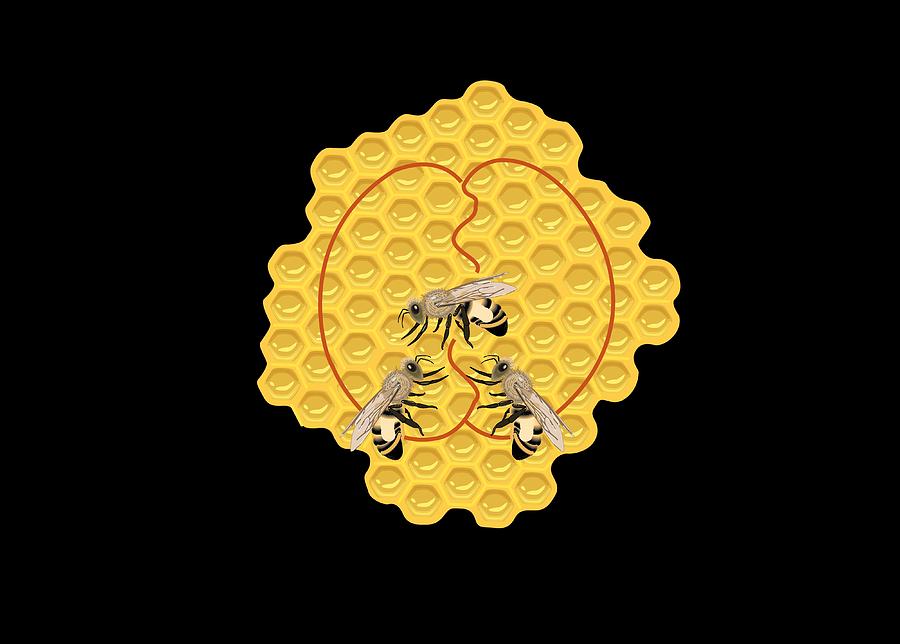 This was established empirically, when the hive was placed at the bottom of the radio tower, and the food was at the top. The bait was shown to the scout bees, but they were unable to mobilize the pickers there. These limitations of the dancing language of the bees testify to its "closedness" in contrast to the human language, which is an open, changeable system.
This was established empirically, when the hive was placed at the bottom of the radio tower, and the food was at the top. The bait was shown to the scout bees, but they were unable to mobilize the pickers there. These limitations of the dancing language of the bees testify to its "closedness" in contrast to the human language, which is an open, changeable system.
Comparison of communication systems of bees and some animals. And to what extent can the complex linguistic behavior of bees be compared with the communicative activity of other animals?
There are many definitions of language criteria. According to one of them, a person possesses in full seven certain key properties of the language, and only some of them are inherent in the natural languages of animals. Communication systems in some animal species were compared in four groups - insects (honey bee), fish (stickleback), birds (herring gull) and monkeys (gibbon).
Bees, as already mentioned, are endowed with a "language of dancing. " Male and female sticklebacks are characterized by signaling the beginning of reproductive behavior by changing the color and some parts of the body. At the herring gull, parents begin to feed their chicks, signaling readiness to take food by pecking in the direction of the parent's beak. The gibbon community has a system of specific calls that notify of danger or general needs.
" Male and female sticklebacks are characterized by signaling the beginning of reproductive behavior by changing the color and some parts of the body. At the herring gull, parents begin to feed their chicks, signaling readiness to take food by pecking in the direction of the parent's beak. The gibbon community has a system of specific calls that notify of danger or general needs.
According to scientists, in each of the above ways of communication there is at least one of the key properties of the language. And the dances of bees are attributed to the maximum number of properties for animals (six). Of no small importance for this method is the amount of information that these insects are able to transmit. So bees can only transmit about four bits of information about the direction of flight. And the maximum amount of information transmitted by the “language of dances” may be possible to establish after more thorough research.
What kind of innate "computer" program should be in bees to take into account all the difficulties they constantly face and ensure a regular sequence of various actions?
Undoubtedly, for this, bees are endowed with the most complex innate knowledge, memory, the ability to learn, excellent sensory organs, orientation and communication systems for transmitting information to family members, and many other abilities, and their research is boundless.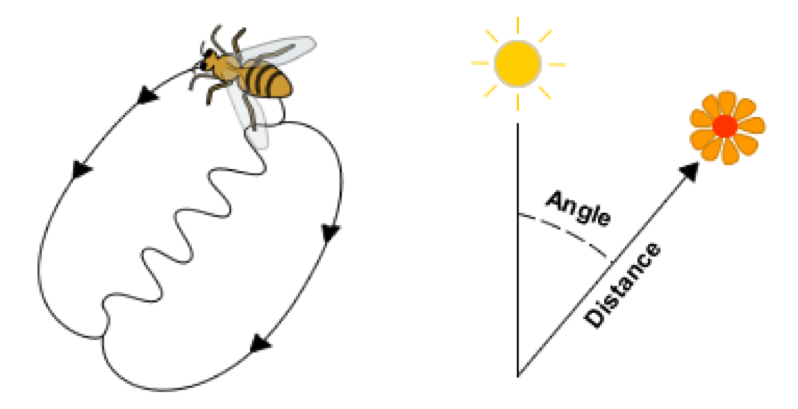
This text is an introductory fragment.
Wise Exchange
Wise Exchange He reasoned wisely: having in his hands all worldly and ordinary human bliss and for the sake of God rejecting it and renouncing it, he thereby made no mistake, but simply, as it were, exchanged one obol or one-day meager glory for inexhaustible treasures and
4) Student exchange. Education abroad
4) Student exchange. Education abroad An important factor that contributes to the expansion of the spiritual and scientific-theological horizons of students of Orthodox theological schools in different countries is the exchange of students between these theological schools. It seems to me that such
§ 64.
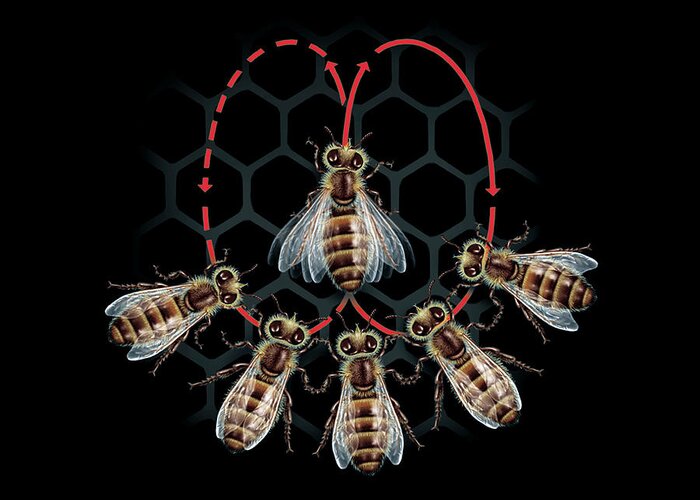 SPEECH AND LANGUAGE - LANGUAGE AND EROS
SPEECH AND LANGUAGE - LANGUAGE AND EROS § 64. SPEECH AND LANGUAGE - LANGUAGE AND EROS Cognition as a personal relationship is expressed by speech (?????). However, speech is not limited to pairing the semantic content of subjective acts of understanding with the linguistic expression that has become established in conventional everyday language. she
2.2.3. The language of the Kabbalists is the language of branches.
2.2.3. The language of the Kabbalists is the language of branches. The language of the branches means that it was created on the basis of the instructions received by the branches in our world from their roots in the higher world, which are the standard for their branches. Standard - that is, the desire to imitate those who are on a higher
Exchanging oneself for another
Exchange yourself for another Another method that generates bodhichitta, that is, the desire to achieve supreme enlightenment for the benefit of all sentient beings, is the exchange of oneself for another.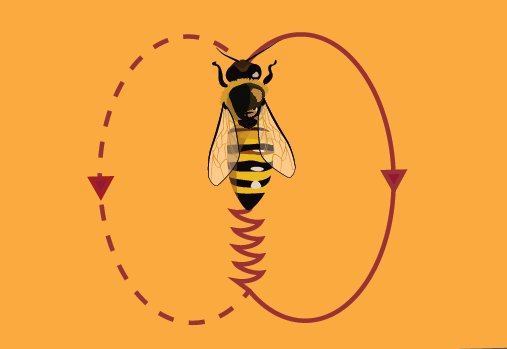 By applying this method, we try to realize how dependent we are on others for everything we have. We are
By applying this method, we try to realize how dependent we are on others for everything we have. We are
Me and others: exchange of places
Me and Others: Exchange of Places The chapter on Meditation Entering the Path of the Bodhisattva explains how to meditate to develop bodhichitta, the aspiration to achieve awakening for the benefit of all sentient beings. Shantideva bases his instructions on Jewel Necklace
Leveling and exchanging oneself for others
Leveling and exchanging yourself for others Another method - equalizing oneself with others and exchanging oneself for others - involves the practitioner developing a deep understanding that he himself is fundamentally like all other living beings. In fact, as far as the natural
1. The language of God or the language of the mob?
1. The language of God or the language of the mob? Surprisingly, the language of every nation, even a small one, necessarily contains information about God. More precisely, those ideas about the Creator that exist in this particular community of people. Even among the semi-savage tribe of Indians,
The language of God or the language of the mob? Surprisingly, the language of every nation, even a small one, necessarily contains information about God. More precisely, those ideas about the Creator that exist in this particular community of people. Even among the semi-savage tribe of Indians,
Exchange
Exchange We recently heard that in New York lately apartments are sometimes exchanged for food and various products. In the Literary Review for February of this year, the following note appeared: “Paris and America seem to be competing in the restoration of the former
1. The language of God or the language of the mob?
1. The language of God or the language of the mob? Surprisingly, the language of every nation, even a small one, necessarily contains information about God. More precisely, those ideas about the Creator that exist in this particular community of people.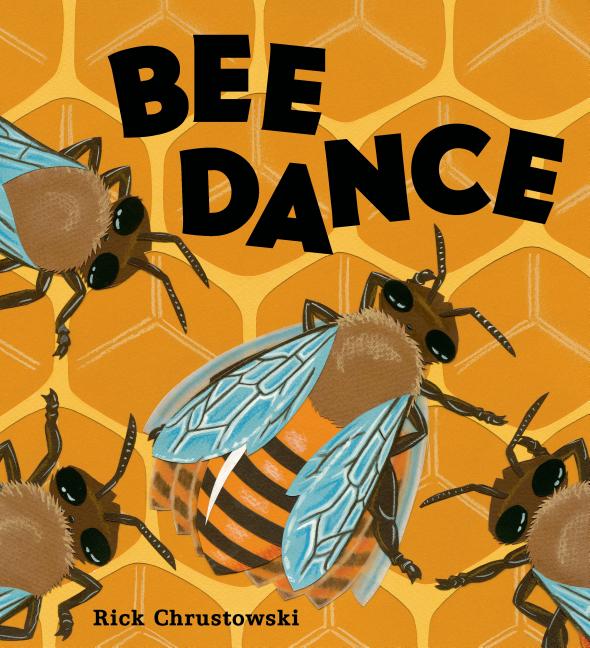 Even among the semi-savage tribe of Indians,
Even among the semi-savage tribe of Indians,
4. Voice exchange
4. Voice exchange At this stage of the analysis, the addition relationship characterizes the relationship between the two parts of the conversation. One speaker "adds" something to what was said by others, and so on
Exchange
Exchange A young novice prayed to God: “Lord, make me a monk so that I don’t waste my time serving other monks, don’t wash the floors, don’t clean the monastery, but serve You with prayers!” And the Lord answered: “Good, but I’ll take a few years of your life, which would you
"Working with information"
"Working with information" We draw food for thought and topics of articles from readers' letters, as well as from caustic attacks and comments of our respected opponents, for which we appreciate and thank them.

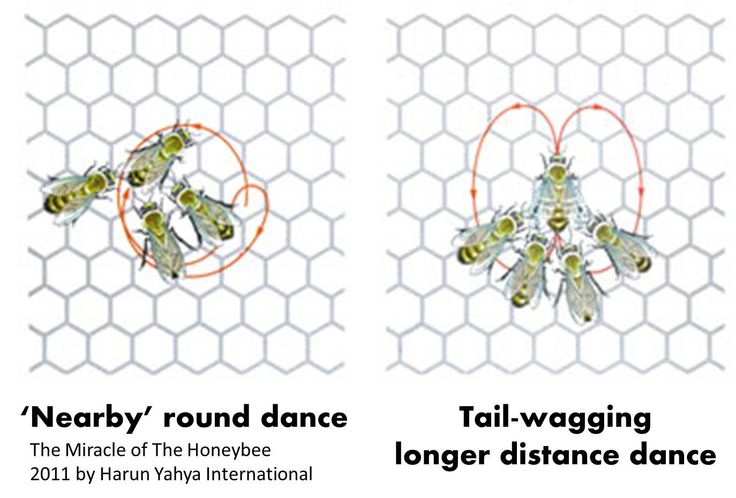 The longer she waggles - typically bees make between one and 100 waggle runs per dance - the farther the flower patch lies from the hive, with every 75 milliseconds she prolongs the dance adding roughly another 330 feet to the distance. She shows how rich the source is by how long and/or how vigorously she dances. Perhaps most astonishingly, she indicates the direction of the source by the angle her waggle walk deviates from an imaginary straight line drawn from the dance floor to the sun at its current position. In other words, if the source lies in the exact direction of the sun, the bee will walk facing exactly straight up (remember that a hive hangs vertically). If it lies 20 degrees to the right of that imaginary line to the sun, the angle of the bee's walk will be 20 degrees to the right of vertical. Finally, the dancer shares the odor of the flowers in question with the other bees, who sample it with their antennae.
The longer she waggles - typically bees make between one and 100 waggle runs per dance - the farther the flower patch lies from the hive, with every 75 milliseconds she prolongs the dance adding roughly another 330 feet to the distance. She shows how rich the source is by how long and/or how vigorously she dances. Perhaps most astonishingly, she indicates the direction of the source by the angle her waggle walk deviates from an imaginary straight line drawn from the dance floor to the sun at its current position. In other words, if the source lies in the exact direction of the sun, the bee will walk facing exactly straight up (remember that a hive hangs vertically). If it lies 20 degrees to the right of that imaginary line to the sun, the angle of the bee's walk will be 20 degrees to the right of vertical. Finally, the dancer shares the odor of the flowers in question with the other bees, who sample it with their antennae. :strip_icc()/pic2038073.jpg) In this way, the bee works for the good of the hive rather than for the good of herself. If she stayed for the whole dance, she would know exactly how rich the source is, for instance. But if all bees waited for the entire dance to take place, and then only went to the richest sources, the colony would not be maximizing its use of available resources. This behavior is one of many instances of how, when it comes to honeybees, natural selection operates on the level of the colony, not the individual bee.
In this way, the bee works for the good of the hive rather than for the good of herself. If she stayed for the whole dance, she would know exactly how rich the source is, for instance. But if all bees waited for the entire dance to take place, and then only went to the richest sources, the colony would not be maximizing its use of available resources. This behavior is one of many instances of how, when it comes to honeybees, natural selection operates on the level of the colony, not the individual bee.  The shake dance encourages these non-foragers to make their way to the waggle dance floor.
The shake dance encourages these non-foragers to make their way to the waggle dance floor. 